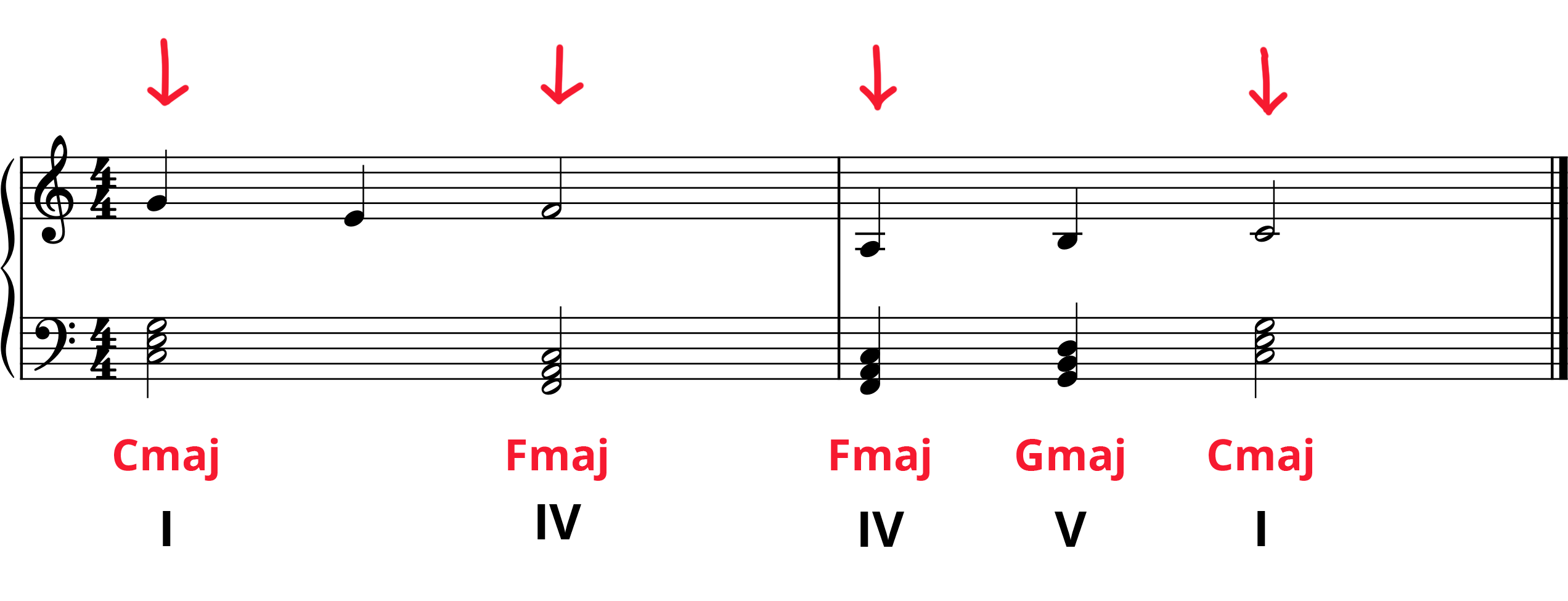
You’re a budding composer and you’ve just come up with a beautiful melody. Congratulations! Now it’s time to flesh out your song with harmony. This can seem like an intimidating task for beginners. So in this lesson, we’ll teach you how to harmonize a melody in four easy steps (plus a bonus one).
Harmonizing a melody doesn’t need to be complicated. If you have a basic understanding of keys, chords, and scales, you can do it! And even if you don’t, we’ll link you to awesome resources that will fill in the gaps. Anyone can learn how to harmonize a melody! All it takes is a little imagination.
Table of Contents:
Get exclusive interviews, fascinating articles, and inspiring lessons delivered straight to your inbox.

The first step to harmonizing a melody is knowing what key you’re in. To do this, notice if your melody uses any sharps and flats. Then take a look at the Circle of Fifths and see if your melody matches any of the key signatures. For example, if you notice that your melody has F# and C#, it may be D major or B minor.
Another clue is the note your melody ends on. Most melodies end on the tonic — the first note of the scale. So, if your melody has F# and C# and ends on B, it may be in B minor, not D major.
Our example melody has no sharps and flats and ends on C. Therefore, it’s likely our melody is in the key of C major.

Primary chords are like primary colors! They’re the I, the IV, and the V. In C major, that’s Cmaj, Fmaj, and Gmaj. These are the diatonic chords built on the first, fourth, and fifth note of the C major scale.
You can harmonize any melody in any key with the I, IV, and V. That’s because these chords contain, between them, all the notes in the scale!
So, it’s always easiest to start your harmonization with these three chords. Of course, most songs have more chords than just these three, but we’ll talk more about that later…

Melodies tend to have “target notes.” These are notes that hold extra weight, that the melody builds towards. They usually fall on the downbeat. You can probably intuitively figure out which notes are the target notes, but we’ve pointed to good notes to use as targets in our sample melody above.
To figure out which primary chord matches which target note, find a chord that has a note in common with the target note. For example, our second target note is F, so try Fmaj (F-A-C) with that note.
You don’t have to harmonize just the target notes! You can harmonize every note if you want, or harmonize just one note per measure. Try out what works. In our example, we harmonized the B with Gmaj because V-I makes a satisfying perfect cadence.

You may have noticed that all our primary chords are major chords, which makes our melody sound super sweet and happy.
This is great, but we don’t always want to sound sweet and happy! This is when other chords come in — in particular, let’s introduce the relative minor: the vi.
In C major, our vi chord is Am. Am has the notes A, C, and E, so we can use it to harmonize those notes in our melody. Try it yourself!

If you’re up for a challenge, we can take our harmony to the next level by reharmonizing. This means taking existing chords and replacing them with different ones. Reharming alters the sound and mood of our composition, which can be pretty neat!
The rules are similar: find a chord that has a note in common with your target melody note. For example, to harmonize the F, you can use a Bdim chord.
For more flavor, try 7th chords and extensions. Advanced songwriters can take things even further by harmonizing notes with chords outside the key. This can add crunchiness — but also color — to the composition.
If anything in this lesson makes you scratch your head, these resources might help:
Still not enough reharmonization for you? Some techniques you can try include:
We hope you found this lesson on how to harmonize a melody helpful! Keep experimenting and don’t be afraid to sound “bad” at first — that’s how you learn! Good luck and happy practicing 🙂
Your musical journey starts today: try Pianote and get access to drum, vocal, and guitar lessons too!
Pianote is the Ultimate Online Piano Lessons Experience™. Learn at your own pace, get expert lessons from real teachers and world-class pianists, and join a community of supportive piano players. Learn more about becoming a Member.


By signing up you’ll also receive our ongoing free lessons and special offers. Don’t worry, we value your privacy and you can unsubscribe at any time.
We use cookies for traffic data and advertising. Cookie Policy »